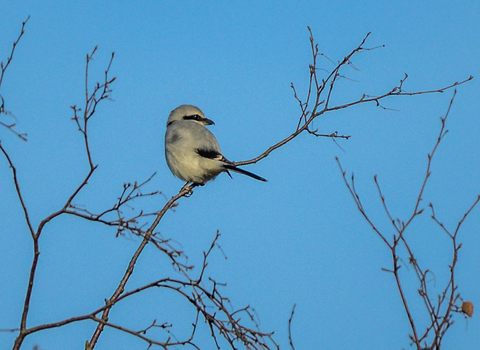
Great grey shrike © Pete Richman
Great grey shrike
This large shrike visits the UK in small numbers each year, passing through on migration or spending the winter here.
Scientific name
Lanius excubitorWhen to see
September to AprilSpecies information
Category
Statistics
Length: 24cmWingspan: 32cm
An uncommon visitor. Protected in the UK under the Wildlife and Countryside Act, 1981.
About
The great grey shrike is the largest shrike found in Europe, with a breeding range that extends from France north to Norway and eastwards to Asia. Great grey shrikes don't breed in the UK, but each year small numbers are seen during migration periods, with some choosing to stay here over winter.Shrikes are a family of carnivorous birds with hooked beaks like a bird of prey. They hunt large insects and small vertebrates, including mammals, reptiles and other birds. They are sometimes known as butcher birds for their habit of impaling prey on thorns, barbed wire, or other suitable spikes. This helps hold their food still so they can tear it up with their beak; it also serves as a larder, where they can store food to eat later.
Great grey shrikes are highly territorial, even defending feeding territories at their wintering grounds, so are usually seen alone. This territory can be quite large, with shrikes wandering over a wide area. They're usually found in open, scrubby habitats where they perch at the very top of bushes and small trees, or on fences.
